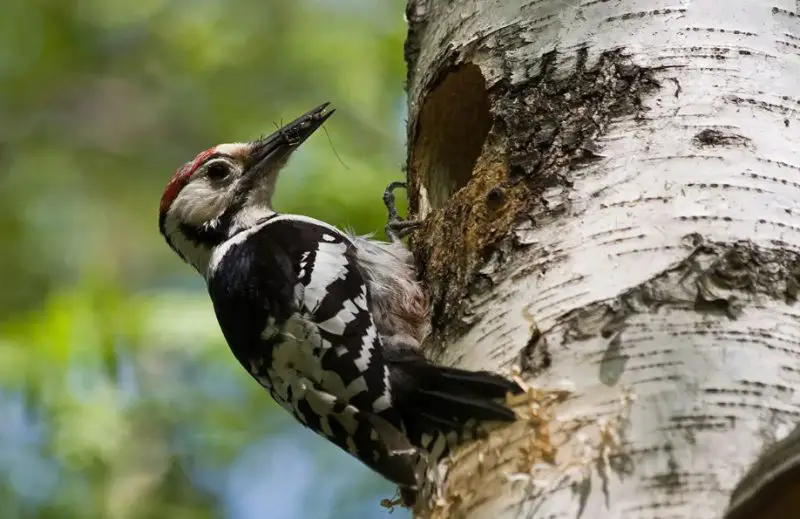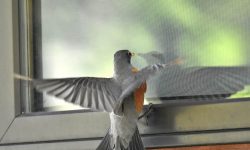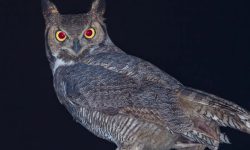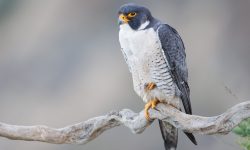Woodpeckers are among the most recognizable birds in the world, known for the rhythmic tapping sounds that echo through forests, parks, and even neighborhoods. Their pecking behavior often raises questions for anyone who hears them working on tree trunks or even tapping on houses. At first glance, it might seem like a simple and repetitive action. However, the reasons behind woodpecker pecking are far more complex and deeply rooted in survival, communication, and instinct.
Understanding why woodpeckers peck wood opens a window into their ecology, behavior, and evolutionary history. These birds rely heavily on their powerful bills, reinforced skulls, and specialized tongues to navigate a world built around wood. Studying their pecking patterns reveals how they find food, claim territory, and raise their young. Every knock on a tree carries meaning, whether it signals courtship, feeding, or warning.
This article explores the many fascinating reasons behind woodpecker pecking. You’ll learn how the behavior benefits them, how their anatomy makes it possible, and why humans sometimes notice woodpeckers around buildings. By the end, you’ll understand that the simple sound of tapping wood represents one of the most remarkable adaptations in the avian world.
What Does Pecking Mean for Woodpeckers?

Pecking is essential for finding food
One of the primary reasons woodpeckers peck wood is to find food. Many species feed on insects living beneath bark, inside decaying logs, or deep within tree trunks. By tapping and chiseling into the wood, woodpeckers uncover beetle larvae, ants, termites, and other hidden prey. Their bills break through layers of bark that other birds cannot access. This gives woodpeckers access to a rich and relatively untapped source of nutrients in forest ecosystems.
When a woodpecker begins tapping, it may be listening for movement beneath the surface. Wood conducts sound differently depending on whether cavities or insect tunnels lie inside. A woodpecker’s highly sensitive hearing helps it detect hollow areas where insects might be hiding. The pecking then becomes more targeted as the bird focuses on a precise spot.
Once the woodpecker reaches its target, it uses its specialized tongue to retrieve prey. The tongue is long, barbed, and sticky, allowing it to pull insects from narrow crevices. This entire process depends on pecking, making it essential to the bird’s ability to forage successfully.
Pecking provides access to tree sap and fruit
Some woodpeckers are known as sap feeders. These species drill horizontal rows of holes in tree bark to release sap. The sticky liquid becomes a food source for the woodpecker and attracts insects the bird also eats. Sapsuckers, for instance, specialize in this technique. Their pecking styles differ from insect-hunting woodpeckers because the holes must be shallow and consistently maintained.
Fruit-feeding woodpeckers may also use pecking to open hard skins or seed coatings. Although not as common as insect hunting or sap extraction, this behavior shows that pecking helps woodpeckers access a variety of foods. It provides nutritional flexibility that helps them survive seasonal changes.
Pecking for food therefore encompasses several strategies. Each involves precision, strength, and a deep connection between the bird’s anatomy and diet. Without pecking, woodpeckers would struggle to gather enough food to survive in their natural habitats.
Pecking as a Form of Communication
Drumming helps woodpeckers mark territory
Beyond feeding, woodpeckers use a distinctive style of tapping known as drumming. Drumming is not related to food gathering but serves as communication. Unlike the random sounds produced during foraging, drumming involves rapid, deliberate bursts of taps on resonant surfaces such as hollow trunks, metal poles, or even gutters.
Drumming announces a woodpecker’s territory. Males, especially during the breeding season, rely on this behavior to warn rivals that the area is already claimed. These rapid beats travel long distances, allowing woodpeckers to communicate across large sections of forest.
Drumming also helps maintain boundaries within pairs. Some species use it as a signal that a mate is nearby. The unique rhythm of each individual’s drumming allows other woodpeckers to identify who is creating the sound. This kind of communication builds order within the community and reduces unnecessary conflict.
Drumming plays a role in courtship
Pecking also becomes important during mating. Males drum more frequently as breeding season approaches. The rhythm and intensity of the drumming function like a courtship display. Females listen for the strongest and most consistent drumming patterns, which may indicate male fitness, territory quality, or experience.
Certain species perform synchronized drumming between mates. This creates bonding between partners and helps coordinate nesting activities. In these cases, drumming represents a ritualized form of communication that strengthens pair bonds.
Because drumming varies across species, birdwatchers often use these rhythms to identify woodpeckers without seeing them. Each species develops a distinct drumming pattern shaped by its behavior and habitat.
The Anatomy Behind Pecking
A reinforced skull protects the brain
Pecking wood at high speed would be impossible without the woodpecker’s specialized skull. Unlike most birds, woodpeckers have thickened bone structures surrounding their brains. These bones absorb shock, preventing brain injury during rapid and repeated impacts.
The skull also contains supportive bony ridges and spongy bone that help distribute force. This natural cushioning system reduces the effect of vibrations produced by pecking. As a result, woodpeckers can strike wood thousands of times a day without harming themselves.
Scientists studying woodpeckers often compare their skulls to built-in crash helmets. This remarkable adaptation allows them to perform behaviors that would be dangerous for other animals.
A strong, chisel-like bill makes penetration possible
The woodpecker’s bill is perfectly designed for striking hard surfaces. It is long, sharp, and extremely durable. The outer layer is made of keratin, the same material found in human fingernails, but much thicker and stronger. Beneath the outer layer is a solid bone core.
Woodpeckers replace worn parts of their bill through constant growth. This ensures that their primary tool for feeding and communication remains effective throughout their lives. The bill also fits tightly into the skull, reducing the risk of slipping or breaking during impact.
The bill’s shape allows the bird to penetrate wood, break away bark, and create clean openings for access to insects or nesting chambers. This precision is essential to the woodpecker’s success.
A long, specialized tongue helps retrieve prey
After pecking reaches insects, the woodpecker uses its extraordinary tongue to capture them. The tongue can extend far beyond the tip of the bill, sometimes up to three times the length of the bird’s head. It is coated with sticky saliva and often equipped with barbs that help pull insects from tunnels.
This tongue structure is supported by hyoid bones that wrap around the skull. This gives the tongue extra mobility and strength. The combination of a powerful bill and specialized tongue makes the woodpecker one of the most efficient insect hunters in the bird world.
Pecking for Nesting Purposes
Excavating nest cavities inside tree trunks
Woodpeckers do not build traditional nests. Instead, they excavate holes inside trees. These cavities protect their eggs from predators and environmental conditions. Pecking is essential to this process. The birds chip away at the wood, forming a rounded chamber deep enough to hold a brood.
Both males and females typically participate in excavation. They take turns drilling the entrance and hollowing out the interior. The process may take several days or even weeks depending on the wood’s hardness.
Nesting cavities become valuable real estate. Once abandoned, other bird species or mammals often reuse them. This makes woodpeckers important contributors to the ecosystem, creating homes for many animals that cannot excavate their own nests.
Choosing the right tree for nesting and safety
Woodpeckers prefer dead or decaying trees for nesting because the wood is softer and easier to excavate. Standing dead trees, known as snags, offer the best material. However, some species adapt to harder wood or even artificial structures if necessary.
The tree’s height, stability, and location influence safety. Nest entrances are typically placed high above the ground to reduce the risk of predators. Woodpeckers also position entrances to avoid direct wind or rain, ensuring the nest remains dry.
Even after the nest chamber is complete, woodpeckers continue pecking around the entrance to clean and maintain the opening. This prevents buildup of debris and ensures the cavity remains functional.
Why Woodpeckers Peck on Houses
Searching for food on wooden structures
Sometimes woodpeckers peck on houses, siding, or fence posts. This behavior often confuses homeowners, but the explanation is usually simple. Wooden structures may contain insects such as carpenter ants or wood-boring beetles. Woodpeckers detect movement inside the walls and attempt to reach the insects by pecking through the material.
This can occur more frequently in older homes or buildings made from natural wood. The sound travels through the structure, making it seem louder than pecking on trees.
Drumming on metal and siding for communication
Woodpeckers often drum on gutters, chimney covers, or metal roofing because these surfaces amplify sound. The loud resonance helps carry their drumming farther across a territory. These sounds can occur early in the morning, especially during breeding season.
This kind of pecking does not involve digging or damage. Instead, the bird is using the structure like a drum to communicate with other woodpeckers. Although the noise may be disruptive, it is usually temporary and harmless.
Mistaking reflective surfaces for suitable nesting sites
Some woodpeckers tap on houses while exploring potential nesting sites. Smooth surfaces like stucco, cedar siding, or wooden beams may appear similar to natural tree bark. If the bird determines the surface is not suitable, it typically loses interest quickly.
This behavior generally lasts only a few minutes unless insects are present or drumming is involved.
The Role of Pecking in Survival and Evolution
Adaptations shaped by millions of years
Woodpeckers have evolved over millions of years to specialize in drilling and tapping. Their survival depends on this behavior, influencing their skull structure, bill shape, tongue mechanics, and behavior patterns. These evolutionary traits allowed woodpeckers to fill a niche that few birds could occupy.
Over time, species adapted to different habitats. Some forage on tree trunks while others hunt on the ground. Some specialize in sap feeding while others excavate cavities in cacti or bamboo. All of these behaviors revolve around pecking.
Pecking helps regulate forest ecosystems
By feeding on insects that damage trees, woodpeckers help maintain forest health. They control populations of beetles, larvae, and pests that would otherwise weaken or kill trees. Their excavated cavities also benefit many animals, making woodpeckers essential ecosystem engineers.
Because woodpeckers depend on tree health for food and habitat, their presence often indicates a stable environment. Forests with many dead trees or snags tend to support larger populations of woodpeckers.
FAQs About Why Woodpeckers Peck Wood
Do woodpeckers get headaches from pecking?
No. Their skulls and brains are protected by reinforced bones and shock-absorbing structures that prevent injury.
Why do woodpeckers drum early in the morning?
Morning is when sound travels farthest. Males drum during early hours to establish territory and attract mates.
Do all woodpeckers peck wood?
Yes, though the intensity varies. Some species specialize in sap feeding, while others dig deep into trees for insects.
Are woodpeckers harmful to trees?
Generally no. Their pecking removes insects and rarely causes lasting harm. Extensive excavations usually occur in trees already weakened by disease.
Why do woodpeckers tap on metal?
Metal surfaces produce louder sounds, making them ideal for communication and territory marking.
Will woodpeckers damage my house?
Sometimes they can if insects are present or if they attempt to excavate. Drumming alone usually causes no damage.
How fast can a woodpecker peck?
Some species can strike wood up to twenty times per second during drumming.
Do woodpeckers migrate?
Some species migrate seasonally while others remain in the same area all year.
Why do woodpeckers abandon holes?
They may leave a cavity if predators appear, if the wood becomes unstable, or if insects are not abundant.
How can I attract woodpeckers?
Providing dead trees, suet feeders, and natural wood habitats helps attract them.
Final Thoughts
Woodpeckers peck wood for many reasons, from finding insects to communicating with mates, defending territory, and constructing safe nesting cavities. Their behavior is a combination of instinct, anatomy, and environmental adaptation. Each tap on a tree reflects millions of years of evolution that shaped one of the most specialized birds on Earth.
By understanding why woodpeckers peck wood, we gain new appreciation for their intelligence and ecological importance. Their drumming rhythms enrich forest soundscapes while their feeding habits help balance insect populations. Whether seen in deep woodlands or tapping on a backyard tree, woodpeckers continue to play a vital role in the natural world.
If you hear one tapping nearby, it may be doing far more than simply pecking wood. It may be communicating, feeding, exploring, or preparing the next generation of forest inhabitants.






